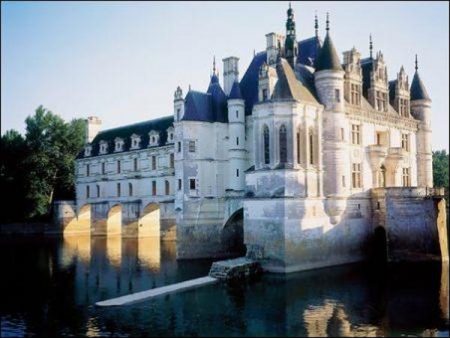No one who has travelled in France, and visited the cathedrals, the châteaux, and the walled towns, can fail to be deeply impressed by the meaning of the two words, “historical monument.” These words are found in every guide-book. Sometimes only the initials are given, as in Murray. A “monument historique” in France means a church, or a castle, or a town that has been thought worthy either of restoration or preservation at the expense of the French people.
There is a tax levied to provide the money necessary for these purposes, and it is astonishing how much the French are willing to pay to preserve or restore whatever has to do with their history as a nation. The chateau, which was an important part of the old town, is not yet completely restored, and it will cost a large sum of money before that is finished, in the same way as the cathedral and the walls and towers have been now made nearly as they were when they were built.
The same thing has been done at Nîmes, though not at so great a cost. But this is only one among many illustrations as to the spirit of the French people in this matter. The Château of Pierrefonds was restored by Mr. Viollet-le-Duc in the time of Louis Napoleon. His skill in bringing mediæval buildings, apparently dead, back again to the life that was theirs at the time when they were built.
The outlay of money does not cease even when the restorations are completed. There must be a “custodian” for every historical monument, and he must have a house to live in and a salary to support him. Of course the fees given by visitors are no small part of his remuneration, but, nevertheless, he is a government official, and the government is responsible for his maintenance.
There are many places in France where other questions as to money are involved in the preservation of the ancient monuments. Bayonne is an example in point. This was a very strongly fortified town in the Middle Ages. The walls of the town are mostly preserved. The moat is there, too, although not now full of water. The fortified gates, the ramparts, still are there, and the bastions and barbicans outside the walls.
All these take up an immense amount of space, and every foot of land they cover would be valuable for business purposes, because Bayonne is a flourishing city,–a seaport, growing every day in commercial importance. Nevertheless, the old walls and moat, the barbicans and bastions, are not disturbed. They are kept as monuments to the glory of France, and also for illustration of history. They must inspire the French with patriotic devotion to their own land.
There is a lesson to be learned here as to the enlightenment of the French people at the present day, and there is another lesson to be learned, by way of contrast, in going back to the French Revolution, and seeing that no social convulsion the world has ever seen destroyed so many relies of the past as did that one. Not even the iconoclasts of Cromwell were so unsparing in wanton destruction. It seems as if the French of today were trying to make amends for the fearful excesses of those who were goaded to madness by the tyranny of king after king, culminating in the frightful contrast between the luxury of Louis XIV.’s court and the misery of his people.
The fury past, calmness regained, free government assured, the people value as precious things all that remains in visible form to tell of their ancient history.
It is not only those connected with the government who feel in this way. The common people are in full sympathy with this feeling. The custodian of Carcassonne said, with pride, that he paid his share of the tax for the restoration of the ancient place like any other citizen, although he is a government official; and the same thing would be said by all those who take care of the French historical monuments.
This custodian of Carcassonne was a remarkable man. He had the courtesy of a gentleman, the knowledge of a scholar about his own subject, and much intelligence about other matters beside.
The custodian of Aigues-Mortes was equally courteous and equally intelligent. They had made the one thing that is entrusted to their care the sole study of their lives. They loved it and they knew it.
It would be well if the American people would take care of such historical monuments as they have in the same way as is the custom now in France.
Views: 187



